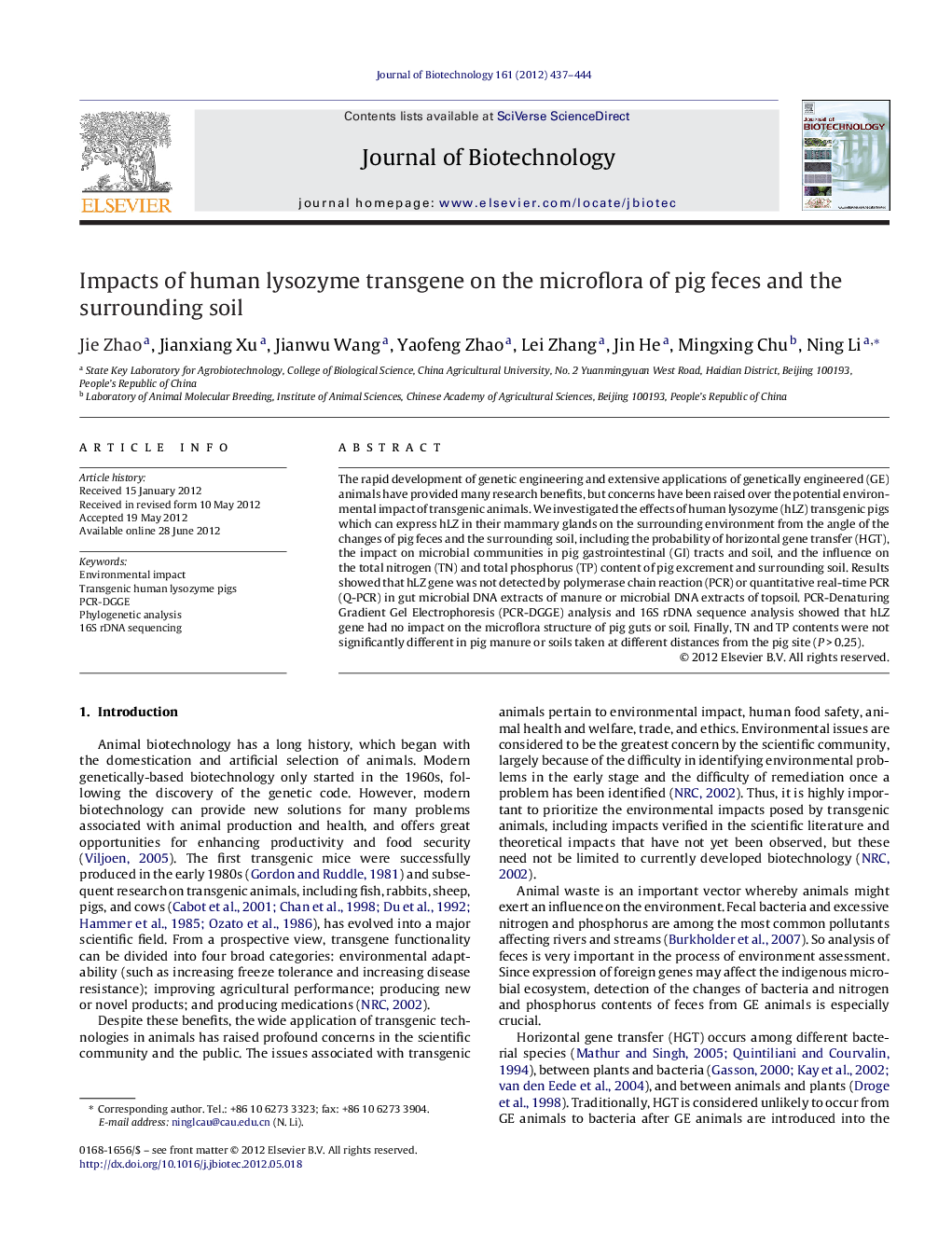| Article ID | Journal | Published Year | Pages | File Type |
|---|---|---|---|---|
| 23675 | Journal of Biotechnology | 2012 | 8 Pages |
The rapid development of genetic engineering and extensive applications of genetically engineered (GE) animals have provided many research benefits, but concerns have been raised over the potential environmental impact of transgenic animals. We investigated the effects of human lysozyme (hLZ) transgenic pigs which can express hLZ in their mammary glands on the surrounding environment from the angle of the changes of pig feces and the surrounding soil, including the probability of horizontal gene transfer (HGT), the impact on microbial communities in pig gastrointestinal (GI) tracts and soil, and the influence on the total nitrogen (TN) and total phosphorus (TP) content of pig excrement and surrounding soil. Results showed that hLZ gene was not detected by polymerase chain reaction (PCR) or quantitative real-time PCR (Q-PCR) in gut microbial DNA extracts of manure or microbial DNA extracts of topsoil. PCR-Denaturing Gradient Gel Electrophoresis (PCR-DGGE) analysis and 16S rDNA sequence analysis showed that hLZ gene had no impact on the microflora structure of pig guts or soil. Finally, TN and TP contents were not significantly different in pig manure or soils taken at different distances from the pig site (P > 0.25).
► We detected HGT of hLZ transgene to micrflora of pig feces and the surrounding soil. ► We examined the impact of hLZ on microbial communities of pig feces and soil. ► TN and TP content of excrement of hLZ pigs and the surrounding soil were examined. ► hLZ transgene has no impact on environment through the above three aspects.
